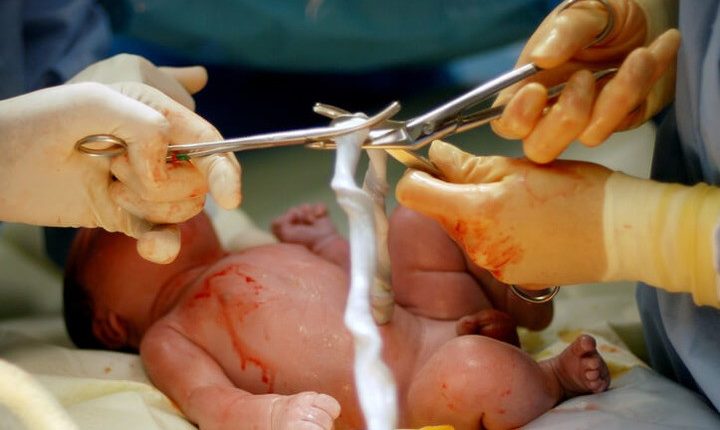
Umbilical cord: donation and preservation
The umbilical cord, also known as the umbilical cord, is an anatomical formation connecting the foetus to the placenta
It is a deciduous, i.e. temporary, conduit that contains the blood vessels connecting the placenta and the fetus, allowing the latter to survive.
Donation and storage of umbilical cord blood
In many countries, the collection, donation and subsequent storage of umbilical cord blood have become common practice.
In fact, cord blood is a valuable source of haematopoietic stem cells that can be used as an alternative to bone marrow to treat important blood diseases (e.g. leukaemia).
Stem cells can be stored for very long periods of time (more than twenty years) in special cryogenic containers, where the temperature is constantly kept below -150 °C by immersion in liquid nitrogen or an atmosphere of nitrogen vapour.
Cryogenic containers are stored in special facilities called ‘cryobanks’ or simply ‘banks’
Donation of umbilical cord blood can be for ‘heterologous’ (i.e. ‘allogeneic’ or ‘public’) use, when it is made available to the community, or for autologous (private) use when the stem cells are stored for the possible future care of the newborn or one of his or her family members.
In Italy, the donation for autologous use can only be made free of charge in public banks in special cases provided for in Annex 1 of DL 18 November 2009, otherwise the costs are totally borne by the mother and the blood must be exported abroad and sent to the laboratories of a private bank or to those of a humanitarian organisation such as the German Red Cross (DRK), which in Germany, in Frankfurt am Main, also processes the cord blood of national and foreign autologous donations in addition to that of national public donations.
The collection is carried out by the staff of the clinic where the birth takes place, after the birth, by collecting all the blood contained within the umbilical cord in a sterile bag
The bag is then placed in a special thermostatic container and sent to the laboratory of the public or private facility that processes the blood, where it must arrive within 48 hours.
The blood is then analysed and separated into its white fraction containing the stem cells, which is then fortified with dimethyl sulphoxide (DMSO), to protect the cells during freezing, and frozen with an appropriate temperature profile.
The stem cells, frozen together with the white blood cells, are then transferred to a cryogenic quarantine container where they await the results of the tests (approximately 3 weeks).
If the results are favourable, they are transferred to the final container.
Some banks do not separate the white fraction.
If the blood is not separated, the red blood cells break down during freezing, releasing chemicals toxic to the stem cells, which inevitably leads to a partial deterioration of the quality of the sample.
Read Also
Emergency Live Even More…Live: Download The New Free App Of Your Newspaper For IOS And Android
Umbilical Cord: What Is It, What Is It For, What Does It Contain?
Congenital Heart Disease And Safe Pregnancy: The Importance Of Being Followed From Before Conception
The Stages Of Childbirth, From Labour To Birth
APGAR Test And Score: Assessing The Health Status Of An Newborn
Why Are Hiccups So Common In Newborns And How Can They Be Overcome?
Seizures In The Neonate: An Emergency That Needs To Be Addressed
Emergency-Urgency Interventions: Management Of Labor Complications
What Is Transient Tachypnoea Of The Newborn, Or Neonatal Wet Lung Syndrome?
Tachypnoea: Meaning And Pathologies Associated With Increased Frequency Of Respiratory Acts
Postpartum Depression: How To Recognise The First Symptoms And Overcome It
Postpartum Psychosis: Knowing It To Know How To Deal With It
Childbirth And Emergency: Postpartum Complications
European Resuscitation Council (ERC), The 2021 Guidelines: BLS – Basic Life Support
Pre-Hospital Seizure Management In Paediatric Patients: Guidelines Using GRADE Methodology / PDF
New Epilepsy Warning Device Could Save Thousands Of Lives
Understanding Seizures And Epilepsy
First Aid And Epilepsy: How To Recognise A Seizure And Help A Patient
Childhood Epilepsy: How To Deal With Your Child?
Epileptic Seizures: How To Recognise Them And What To Do
Placenta Previa: Definition, Causes, Risk Factors, Symptoms, Classification



